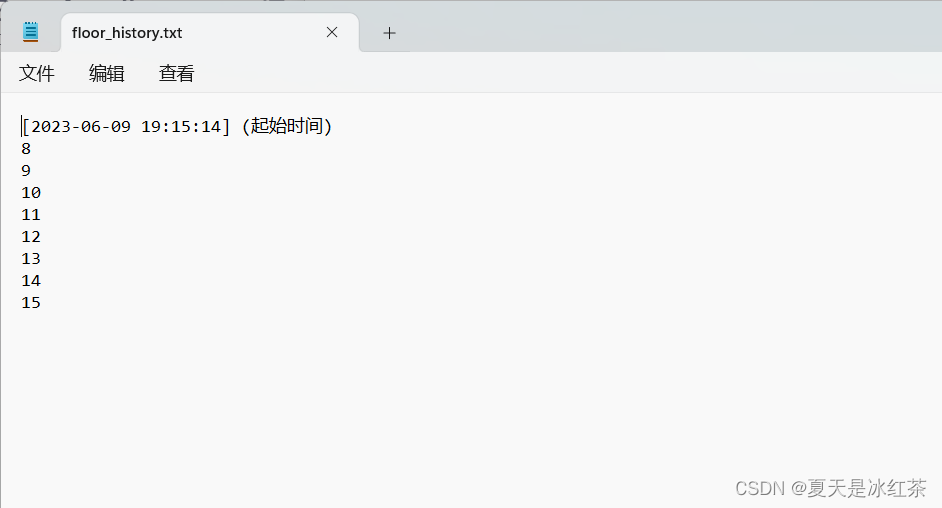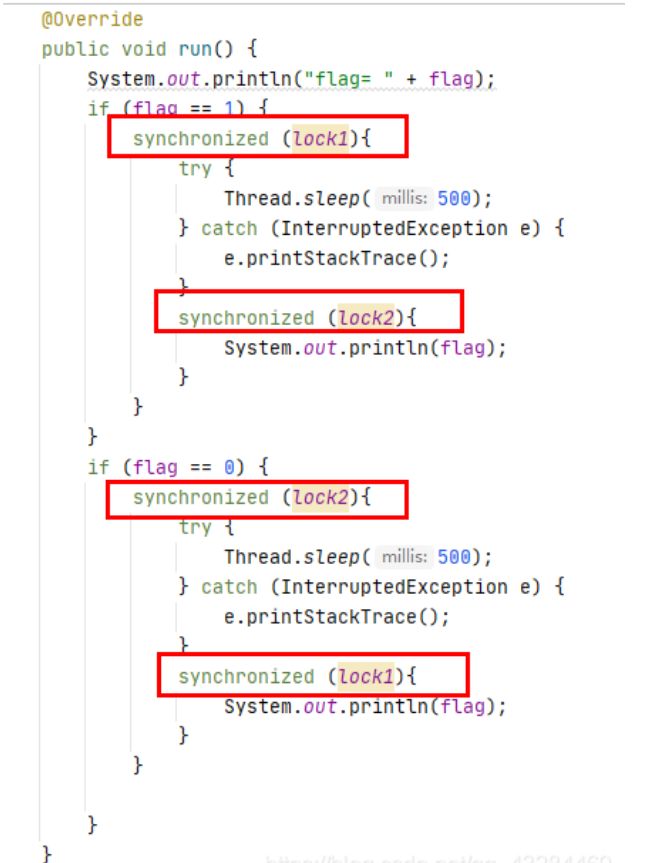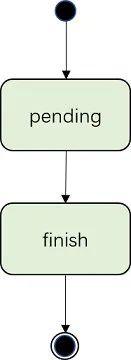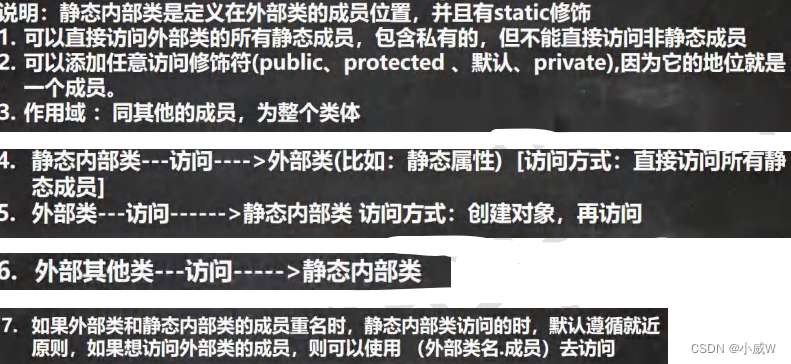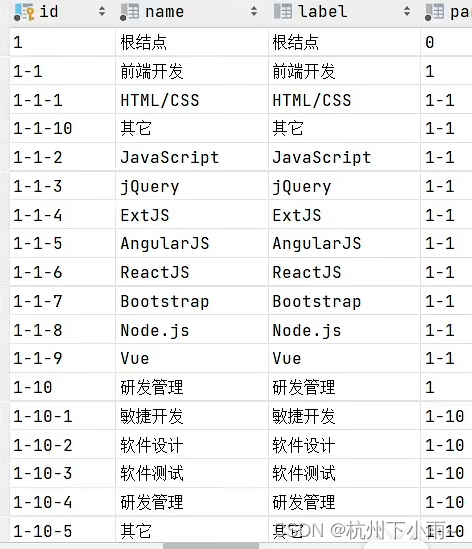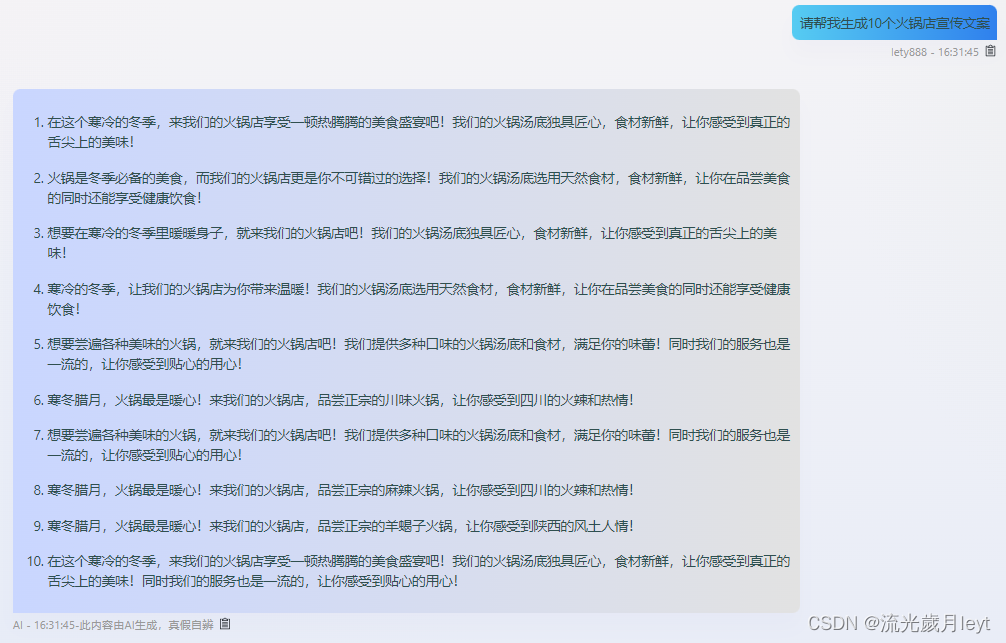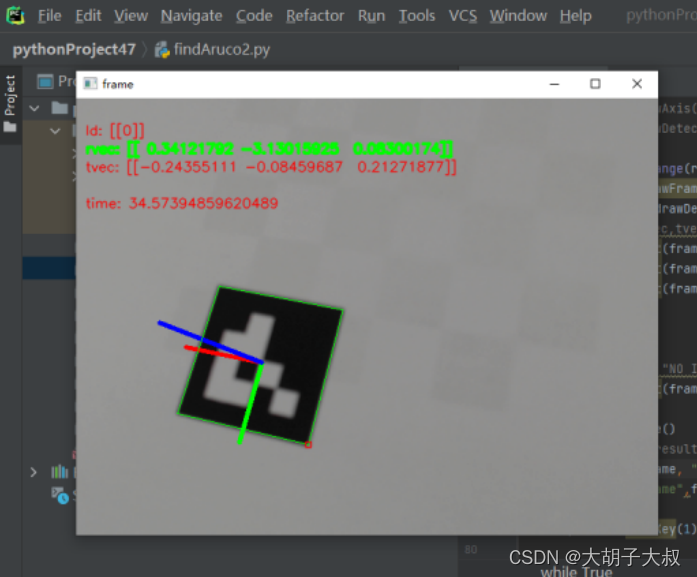工作环境:STM32CubeMX+Keil
相关环境准备这里就不介绍了。
bootloader是什么
- bootloader就是单片机启动时候运行的一段小程序,这段程序负责单片机固件的更新,也就是单片机选择性的自己给自己下载程序。可以更新,可以不更新,更新的话,boot loader更新完程序后,跳转到新程序运行;不更新的话,boot loader直接跳转到原来的程序去运行。
- boot loader更新完程序后并不擦除自己,下次启动后依然先运行boot loader程序,又可以选择性的更新或者不更新程序,所以boot loader就是用来管理单片机程序的更新。
- 在实际的单片机工程项目中,如果加入了boot loader功能,就可以给单片机日后升级程序留出一个接口,方便日后单片机程序更新。当然,这就需要创建亮哥工程项目,一个位boot loader工程,一个为app工程。
- bootloader工程生成的文件通常下载到ROM或者Flash中的首地址,这样可以保证上电后先运行boot loader程序。而app工程生成的文件则下载到ROM或者Flash中boot loader后面的地址中。也就是说,存在ROM或者Flash中的内容是分为两部分的。
- 要实现同一个ROM或者Flash中保存两段程序,并且保证不能相互覆盖,则需要在下载程序时指定地址。如在keil中,可以进行如下调整(需要知道Flash的扇区地址)。

升级流程
在介绍升级流程之前。我们必须先搞清楚MCU型号对应的Flash分区情况,可以直接查看手册(当然,其实我们也可以在hal库代码中找到相关信息),如下图:
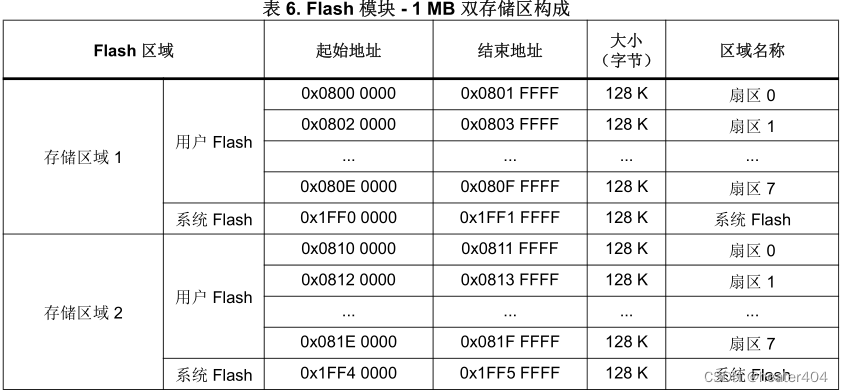
因为上文说到,我们有两个程序需要下载到Flash,bootloader文件一般下载在最开始的地址,application一般在后面的地址。
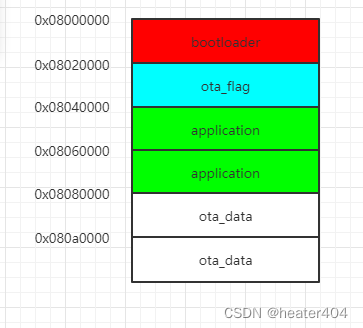
上图即为我们预定义的flash分配情况。我们一般是按照整个扇区进行利用的,这样便于擦除和写入。
bootloader从起始地址开始,这个没有疑问。我分配了扇区0给它(这个大小是具体情况而定)。
ota_flag这个是用于存放是否升级的标志位。存放在扇区1,ota_flag只占用4字节,当写入0x87654321的时候,表示需要升级,否则,无需升级。
application占用了两个连续的扇区,扇区2和扇区3。
ota_data也占用了两个连续的扇区,扇区4和扇区5。
![[外链图片转存失败,源站可能有防盗链机制,建议将图片保存下来直接上传(img-oH0MLjqQ-1686299396663)(C:\Users\DELL\AppData\Roaming\Typora\typora-user-images\image-20230609161215006.png)]](https://img-blog.csdnimg.cn/a558ab631fe646e8b37b3cd79e6059ff.png)
代码示例
#ifndef BOOTLOADER_H
#define BOOTLOADER_H
#ifdef __cpluscplus
extern "c"
{
#endif
#define FLASH_SECTOR_STEP_SIZE (128*1024)
#define FLASH_SECTOR_0_ADDRESS (0x08000000)
#define MCU_OTA_FLAG_ADDRESS (FLASH_SECTOR_0_ADDRESS+ FLASH_SECTOR_STEP_SIZE * FLASH_SECTOR_1)
#define APPLICATION_ADDRESS (FLASH_SECTOR_0_ADDRESS+ FLASH_SECTOR_STEP_SIZE * FLASH_SECTOR_2)
#define MCU_OTA_DATA_ADDRESS (FLASH_SECTOR_0_ADDRESS+ FLASH_SECTOR_STEP_SIZE * FLASH_SECTOR_4)
#define MCU_OTA_FLAG_VALUE (0x87654321)
int erase_mcu_ota_flag();
int write_mcu_ota_flag();
int erase_application_sectors();
int write_application_sectors();
int mcu_reset();
#ifdef __cpluscplus
}
#endif
#endif
#include "bootloader.h"
#include "stm32h7xx_hal.h"
#include "stm32h7xx_hal_flash.h"
#include <stdint.h>
int erase_mcu_ota_flag()
{
int ret=0;
uint32_t SectorError = 0;
FLASH_EraseInitTypeDef sector;
sector.TypeErase = FLASH_TYPEERASE_SECTORS;
sector.VoltageRange = FLASH_VOLTAGE_RANGE_3;
sector.Sector = FLASH_SECTOR_1;
sector.NbSectors = 1;
HAL_FLASH_Unlock();
ret = HAL_FLASHEx_Erase(§or, &SectorError);
HAL_FLASH_Lock();
return ret;
}
int write_mcu_ota_flag()
{
int ret=0;
HAL_FLASH_Unlock();
ret = HAL_FLASH_Program(FLASH_PSIZE_WORD, MCU_OTA_FLAG_ADDRESS, MCU_OTA_FLAG_VALUE);
HAL_FLASH_Lock();
return ret;
}
int erase_application_sectors()
{
int ret=0;
uint32_t SectorError = 0;
FLASH_EraseInitTypeDef sector;
sector.TypeErase = FLASH_TYPEERASE_SECTORS;
sector.VoltageRange = FLASH_VOLTAGE_RANGE_3;
sector.Sector = FLASH_SECTOR_2;
sector.NbSectors = 2;
HAL_FLASH_Unlock();
ret = HAL_FLASHEx_Erase(§or, &SectorError);
HAL_FLASH_Lock();
return ret;
}
int write_application_sectors()
{
int ret=0;
HAL_FLASH_Unlock();
for(int i=0;i<MCU_OTA_DATA_ADDRESS;i+=4)
{
ret = HAL_FLASH_Program(FLASH_PSIZE_WORD, APPLICATION_ADDRESS+i, *(__IO uint32_t*)(MCU_OTA_DATA_ADDRESS+i));
}
HAL_FLASH_Lock();
return ret;
}
int mcu_reset()
{
__set_FAULTMASK(1);
__NVIC_SystemReset();
}
/* USER CODE BEGIN Header */
/**
******************************************************************************
* @file : main.c
* @brief : Main program body
******************************************************************************
* @attention
*
* Copyright (c) 2023 STMicroelectronics.
* All rights reserved.
*
* This software is licensed under terms that can be found in the LICENSE file
* in the root directory of this software component.
* If no LICENSE file comes with this software, it is provided AS-IS.
*
******************************************************************************
*/
/* USER CODE END Header */
/* Includes ------------------------------------------------------------------*/
#include "main.h"
#include "usart.h"
#include "gpio.h"
/* Private includes ----------------------------------------------------------*/
/* USER CODE BEGIN Includes */
#include "bootloader.h"
#include <stdio.h>
/* USER CODE END Includes */
/* Private typedef -----------------------------------------------------------*/
/* USER CODE BEGIN PTD */
typedef void (*pFunction)();
/* USER CODE END PTD */
/* Private define ------------------------------------------------------------*/
/* USER CODE BEGIN PD */
/* USER CODE END PD */
/* Private macro -------------------------------------------------------------*/
/* USER CODE BEGIN PM */
/* USER CODE END PM */
/* Private variables ---------------------------------------------------------*/
/* USER CODE BEGIN PV */
/* USER CODE END PV */
/* Private function prototypes -----------------------------------------------*/
void SystemClock_Config(void);
/* USER CODE BEGIN PFP */
/* USER CODE END PFP */
/* Private user code ---------------------------------------------------------*/
/* USER CODE BEGIN 0 */
/* USER CODE END 0 */
/**
* @brief The application entry point.
* @retval int
*/
int main(void)
{
/* USER CODE BEGIN 1 */
/* USER CODE END 1 */
/* MCU Configuration--------------------------------------------------------*/
/* Reset of all peripherals, Initializes the Flash interface and the Systick. */
HAL_Init();
/* USER CODE BEGIN Init */
/* USER CODE END Init */
/* Configure the system clock */
SystemClock_Config();
/* USER CODE BEGIN SysInit */
/* USER CODE END SysInit */
/* Initialize all configured peripherals */
MX_GPIO_Init();
MX_USART1_UART_Init();
/* USER CODE BEGIN 2 */
uint32_t JumpAddress;
pFunction Jump_To_Application;
if(*(__IO uint32_t*)MCU_OTA_FLAG_ADDRESS != MCU_OTA_FLAG_VALUE)
{
JumpAddress = *(__IO uint32_t*)(APPLICATION_ADDRESS+4);
Jump_To_Application = (pFunction)JumpAddress;
__set_MSP(*(__IO uint32_t*)APPLICATION_ADDRESS);
Jump_To_Application();
}
else
{
printf("mcu_ota");
erase_application_sectors();
write_application_sectors();
erase_mcu_ota_flag();
mcu_reset();
}
/* USER CODE END 2 */
/* Infinite loop */
/* USER CODE BEGIN WHILE */
while (1)
{
/* USER CODE END WHILE */
/* USER CODE BEGIN 3 */
}
/* USER CODE END 3 */
}
/**
* @brief System Clock Configuration
* @retval None
*/
void SystemClock_Config(void)
{
RCC_OscInitTypeDef RCC_OscInitStruct = {0};
RCC_ClkInitTypeDef RCC_ClkInitStruct = {0};
/** Supply configuration update enable
*/
HAL_PWREx_ConfigSupply(PWR_LDO_SUPPLY);
/** Configure the main internal regulator output voltage
*/
__HAL_PWR_VOLTAGESCALING_CONFIG(PWR_REGULATOR_VOLTAGE_SCALE2);
while(!__HAL_PWR_GET_FLAG(PWR_FLAG_VOSRDY)) {}
/** Initializes the RCC Oscillators according to the specified parameters
* in the RCC_OscInitTypeDef structure.
*/
RCC_OscInitStruct.OscillatorType = RCC_OSCILLATORTYPE_HSE;
RCC_OscInitStruct.HSEState = RCC_HSE_ON;
RCC_OscInitStruct.PLL.PLLState = RCC_PLL_ON;
RCC_OscInitStruct.PLL.PLLSource = RCC_PLLSOURCE_HSE;
RCC_OscInitStruct.PLL.PLLM = 1;
RCC_OscInitStruct.PLL.PLLN = 75;
RCC_OscInitStruct.PLL.PLLP = 2;
RCC_OscInitStruct.PLL.PLLQ = 2;
RCC_OscInitStruct.PLL.PLLR = 2;
RCC_OscInitStruct.PLL.PLLRGE = RCC_PLL1VCIRANGE_3;
RCC_OscInitStruct.PLL.PLLVCOSEL = RCC_PLL1VCOWIDE;
RCC_OscInitStruct.PLL.PLLFRACN = 0;
if (HAL_RCC_OscConfig(&RCC_OscInitStruct) != HAL_OK)
{
Error_Handler();
}
/** Initializes the CPU, AHB and APB buses clocks
*/
RCC_ClkInitStruct.ClockType = RCC_CLOCKTYPE_HCLK|RCC_CLOCKTYPE_SYSCLK
|RCC_CLOCKTYPE_PCLK1|RCC_CLOCKTYPE_PCLK2
|RCC_CLOCKTYPE_D3PCLK1|RCC_CLOCKTYPE_D1PCLK1;
RCC_ClkInitStruct.SYSCLKSource = RCC_SYSCLKSOURCE_PLLCLK;
RCC_ClkInitStruct.SYSCLKDivider = RCC_SYSCLK_DIV1;
RCC_ClkInitStruct.AHBCLKDivider = RCC_HCLK_DIV2;
RCC_ClkInitStruct.APB3CLKDivider = RCC_APB3_DIV2;
RCC_ClkInitStruct.APB1CLKDivider = RCC_APB1_DIV2;
RCC_ClkInitStruct.APB2CLKDivider = RCC_APB2_DIV2;
RCC_ClkInitStruct.APB4CLKDivider = RCC_APB4_DIV2;
if (HAL_RCC_ClockConfig(&RCC_ClkInitStruct, FLASH_LATENCY_2) != HAL_OK)
{
Error_Handler();
}
}
/* USER CODE BEGIN 4 */
/* USER CODE END 4 */
/**
* @brief This function is executed in case of error occurrence.
* @retval None
*/
void Error_Handler(void)
{
/* USER CODE BEGIN Error_Handler_Debug */
/* User can add his own implementation to report the HAL error return state */
__disable_irq();
while (1)
{
}
/* USER CODE END Error_Handler_Debug */
}
#ifdef USE_FULL_ASSERT
/**
* @brief Reports the name of the source file and the source line number
* where the assert_param error has occurred.
* @param file: pointer to the source file name
* @param line: assert_param error line source number
* @retval None
*/
void assert_failed(uint8_t *file, uint32_t line)
{
/* USER CODE BEGIN 6 */
/* User can add his own implementation to report the file name and line number,
ex: printf("Wrong parameters value: file %s on line %d\r\n", file, line) */
/* USER CODE END 6 */
}
#endif /* USE_FULL_ASSERT */
总结
r line source number
- @retval None
*/
void assert_failed(uint8_t file, uint32_t line)
{
/ USER CODE BEGIN 6 /
/ User can add his own implementation to report the file name and line number,
ex: printf(“Wrong parameters value: file %s on line %d\r\n”, file, line) /
/ USER CODE END 6 /
}
#endif / USE_FULL_ASSERT */
``
总结
关于地址跳转部分,可以参考STM32 Bootloader程序中Jump2App函数分析
